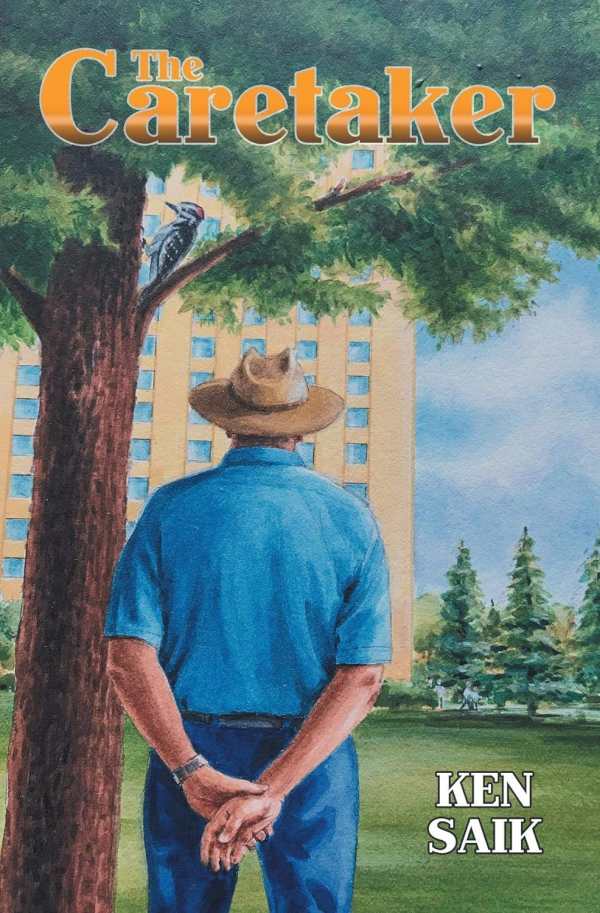The Caretaker
A development project ignites a community’s sense of activism in the lesson-filled novel The Caretaker.
In Ken Saik’s idealized novel The Caretaker, citizens of idyllic Aspen Grove explore what it means to care for a place or a person as a role model, a companion, or a member of a community.
Steve and his brother-in-law Colin made many promises to their deceased loved ones about keeping Sebastian’s Sanctuary in a healthy state. But after Nick, a troubled teenager, attempts to rob elderly Alice in the park, the safety and viability of the park is called into question. Still, with the aid of other Aspen Grove residents, Steve and Colin gather a task force to halt the development of luxury condominiums on the park’s space.
The novel progresses in the form of a how-to, tracking the community’s multiple methods of activism. They write letters, make appeals, talk to local officials, and build marketing strategies for free public services. Meanwhile, Steve tasks himself with Nick’s social rehabilitation, and the two bond over Nick’s deceased father. Nick’s personal improvements are also used as a model, showcasing the immediate benefits of a positive and encouraging interpersonal connection.
Still, challenges arise—most of them in the form of Walter, the business leader of the development project. He becomes a mouthpiece for the development’s agenda, pontificating that it will create jobs, benefit other businesses, and overall enrich the community. However, while Walter is a reliable device for pushing the story forward, he’s a static antagonist beyond his familiar arguments, even though he’s willing to go to drastic lengths to achieve a profit.
This lesson-heavy story moves with speed, eschewing deeper world-building and thorough characterizations in favor of vague language and archetypes. While the through lines of each person’s demeanor and actions are established in clear terms, people’s behaviors are also sometimes inconsistent: Nick tells one of his caretakers that he hates Steve, for example, though he is quite responsive to the older man, even in their early interactions, making their wholesome relationship feel inauthentic. Further, though Nick’s parents both died in the same year, little space is devoted to his mourning; the twin tragedy of their suicides gets short shrift.
The book’s secondary characters are even less attended to; they’re introduced in rapid succession and are not fleshed out beyond their roles. As a result, in scenes with more than two characters, the conversations become too muddled to follow. Still, every character serves the ultimate goal of reinforcing the idea that connecting to one’s community is essential to personal well-being.
In the allegorical novel The Caretaker, community members band together, engaging in activism against outside developers. In the process, they learn that local support systems are essential to living a full life—and that positive change is always possible.
Reviewed by
Natalie Wollenzien
Disclosure: This article is not an endorsement, but a review. The publisher of this book provided free copies of the book and paid a small fee to have their book reviewed by a professional reviewer. Foreword Reviews and Clarion Reviews make no guarantee that the publisher will receive a positive review. Foreword Magazine, Inc. is disclosing this in accordance with the Federal Trade Commission’s 16 CFR, Part 255.

